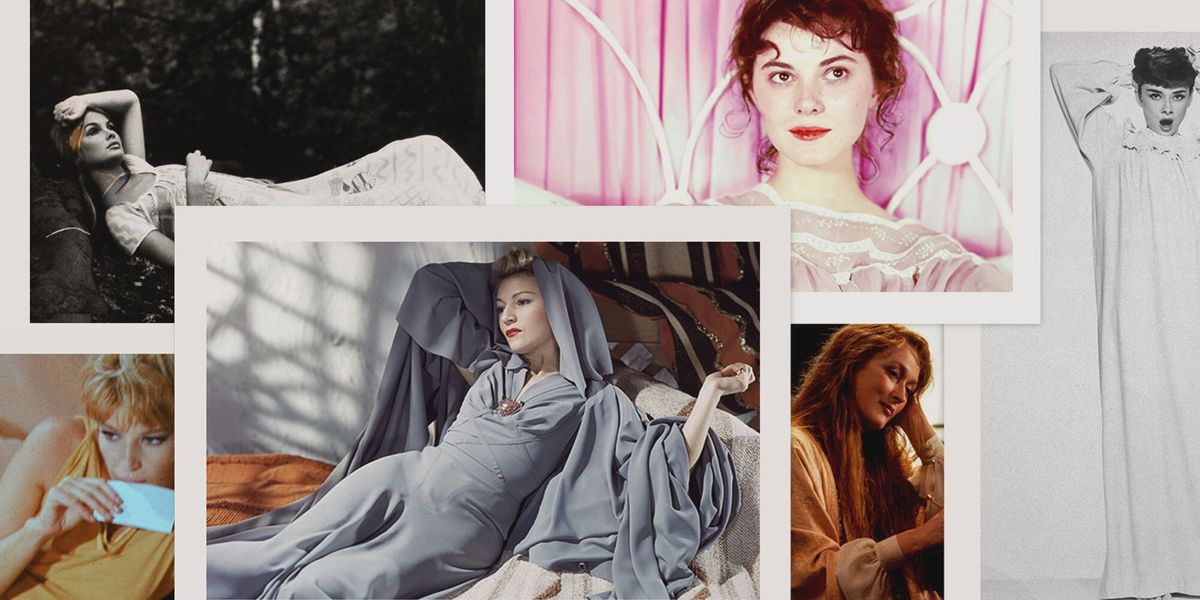Style Points is a new weekly column about how fashion intersects with the wider world.
I have always been supremely jealous of people who slumber like the proverbial log. I’ve never been able to, but especially not now. Not when my brain is an arid desert and my dreams are peopled with a Robert Altman-sized cast of secondary characters. Sleep, when it finally visits, doesn’t feel like a relief so much as it does an extension of the day-in, day-out limbo that is quarantine life.
I feel like I’m alone in this, though, because when I open my feed these days, it’s filled with people in nightgowns. Brands like Sleeper and Dôen offer their own chic versions. The $125 “nap dress,” the breakout product of the bedding brand Hill House Home, has become an Instagram favorite. Everywhere I look, it seems, there are people lounging in eyelet.
This content is imported from Instagram. You may be able to find the same content in another format, or you may be able to find more information, at their web site.
In some ways, the nightgown’s arc, its path to becoming the One True Garment of our current moment, feels inevitable. The aesthetic surrounding it, one of a nostalgic purity and sterility, has rebounded in recent years. Pre-quarantine, I’d noticed, among fashion people I know, a growing taste for a kind of punitive leisure: vacations that included forced walks in Alpine climes, getaways that were like the five-star version of Hans Castorp’s trip up the magic mountain, complete with mandated overchewing of food. Wellness culture, at its most extreme, encouraged us to treat ourselves as nineteenth-century neurasthenics in need of some ever-elusive cure.
Then there was the re-branding of sleep as a luxury good (fancy mattresses, sleep apps, beds to charge your phone in overnight) and housedress-but-make-it-fashion brands like Batsheva making the silhouette feel increasingly acceptable as daywear. Taylor Swift told Rolling Stone that she kept a rack of all-white nightgowns in her apartment for when Lena Dunham came over: “We wear them during the day,” she said, “and look like pioneer women, fresh off the Oregon Trail.” Late last year, the Little Women craze surely motivated many Old Millennials to finally pull the trigger on their own nightgown purchases.
This content is imported from Instagram. You may be able to find the same content in another format, or you may be able to find more information, at their web site.
But the quarantine is where it’s assumed its final form. In the prior world, we wore athleisure to convince others of our constant productivity. All that Lycra broadcast our busy-ness, the work we were planning to do on our bodies, while simultaneously showcasing the results of that work. The nightgown-as-daywear presents a different fantasy: that of being beholden to no one and simply drifting away from the world and all its messy responsibilities. I’ve started calling the resulting look My Year of Rest and Relaxation-core, after the Ottessa Moshfegh novel in which the heroine drugs herself into sleeping away the better part of a year. The nightgown is the perfect look for this kind of endeavor; it effectively puts your body on airplane mode. It’s basically sartorial Ambien. No wonder it’s the uniform of checked-out screen heroines from Scarlett O’Hara to the Lisbon sisters of The Virgin Suicides. To take a daytime nap requires a certain level of privilege; to take a selfie documenting your daytime nap-wear turns things up a notch.
This content is imported from Instagram. You may be able to find the same content in another format, or you may be able to find more information, at their web site.
I can appreciate the aesthetic appeal of a nightgown. I get that they’re comfortable, and who doesn’t crave comfort right now? It’s possible that I’m projecting way too much onto a few yards of fabric. But the nightgown, especially as daywear, strikes me as reactionary. Its evocations of passive Victorian and pre-Raphaelite femininity feel like an uncritical throwback to those eras’ mold of white female fragility. The styling of these images evokes sleeping beauties or Ophelias, or worse, invalids. Fashioning yourself as a tubercular Victorian might once have felt ironic; with millions in the grip of a real pandemic—one that is disproportionately affecting Black and brown communities—it feels Marie Antoinette-at-the-Hameau-level out of touch. And in 2020, the idea of “checking out” and into the seductive world of blameless slumber that the nightgown invites us to, does too. It serves as a reminder that while some people are taking to the streets, others are taking to their beds.
This content is created and maintained by a third party, and imported onto this page to help users provide their email addresses. You may be able to find more information about this and similar content at piano.io

